Choosing an ottoman with an orthopedic mattress
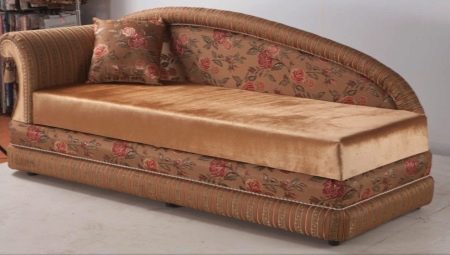
Ottomans with an orthopedic mattress are very popular not only in residential buildings and apartments, but also in modern work and office rooms. Today there are many different modifications and designs of furniture, for example, a corner sofa bed, straight, modular and other models. Therefore, when choosing an ottoman with an orthopedic base for daily use, you should study the recommendations, as well as weigh all the pros and cons of the product.
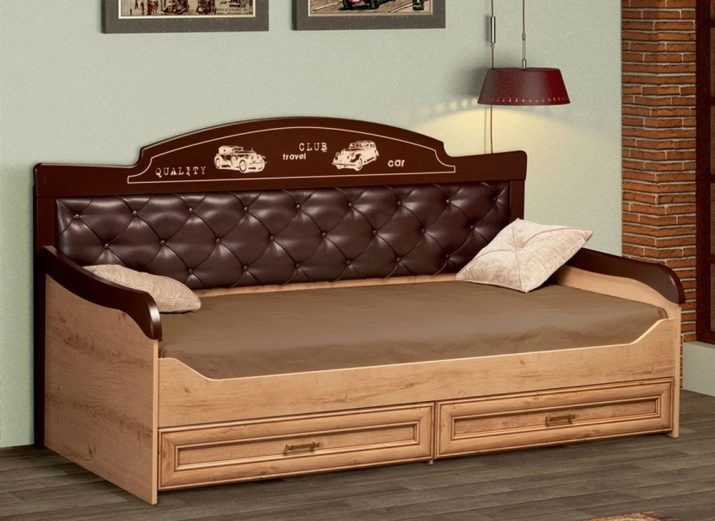
Advantages and disadvantages
The first mentions of the ottoman as a furniture element are found among the Turkic peoples, from their language it literally translates as "board". However, despite the uncomfortable associations of translation, this piece of furniture is very comfortable. An ottoman with an orthopedic mattress provides comfortable, and most importantly, healthy rest and sleep. The special design of the mattress allows you to evenly distribute the body weight, precisely follows its contours, and guarantees a medically correct horizontal position of a person during sleep.
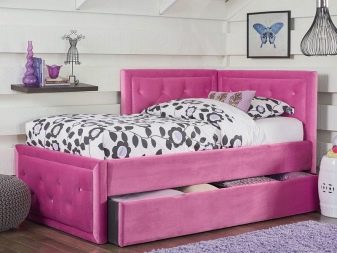
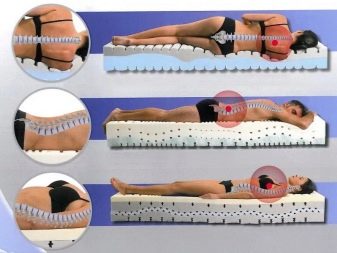
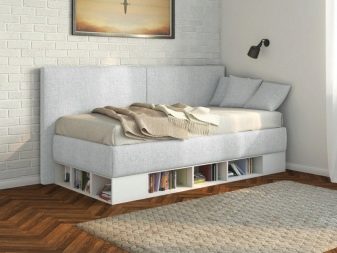

The standard ottoman fully replaces the usual bed for bedrooms, almost all models in the unfolded state can accommodate from 2 to 3 people. Thanks to the orthopedic design of the mattress, the furniture great for daily use.
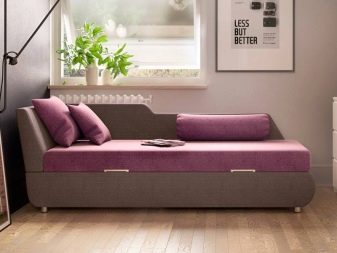
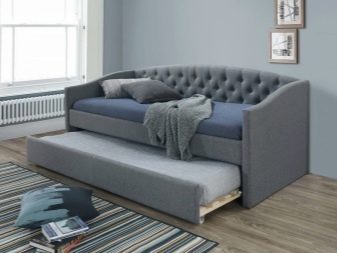
This element of the interior is recommended for installation in children's rooms, since the sleeping surface prevents the formation and development of scoliosis in a child, contributes to the formation of a healthy posture.
An ottoman with an orthopedic mattress is also common among people with diseases of the joints and spine - due to the correct position of the body, even a short rest on such a surface has a good preventive effect. Let's consider other advantages of the product.
- Ergonomic - unlike the sofa upholstery, the surface of the ottoman has no joints and seams, which is important for a comfortable rest during the daily use of furniture.
- Saving - an ottoman with an orthopedic mattress can significantly save money. It simultaneously replaces 2 interior items: a daily sofa for daytime relaxation or reception, as well as a bed for sleeping.
- Versatility - an ottoman is considered one of the best types of upholstered furniture. It is perfect for almost any room: living room, bedroom, nursery, kitchen-dining room.
- Practicality - allows you to efficiently use the space of the room. The design of the furniture does not have massive armrests, volumetric and high back wall.
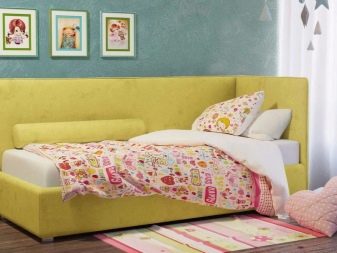

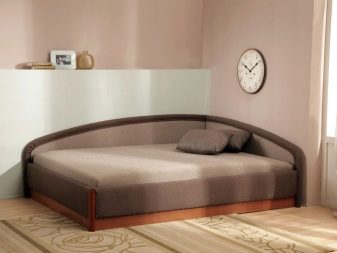

Of the shortcomings, it can be noted relatively high cost - the price level is significantly increased by the orthopedic design. In almost all models offered on the furniture market, half of the cost is made up of a mattress. Another disadvantage is impossibility of transformation, because of which it is not always possible to rearrange the ottoman to another room, you need to very accurately calculate the size of the product when choosing, planning the interior.
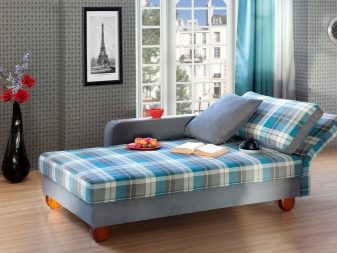
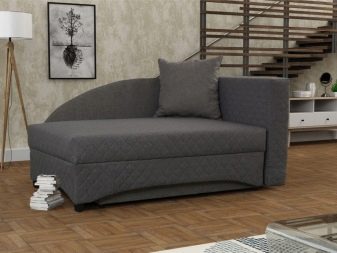
Views
Unlike the usual sofa-bed, the ottoman does not unfold, that is, the product does not transform, but already initially represents a ready-made sleeping place. During the day, to give the ottoman the look of a sofa for the living room, various ottomans and soft pillows from the same upholstery material are laid on it. Although the furniture does not unfold, almost all models are equipped with secret drawers for linen, access to which is provided by pull-out or lifting mechanisms.
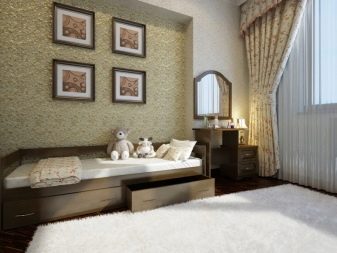
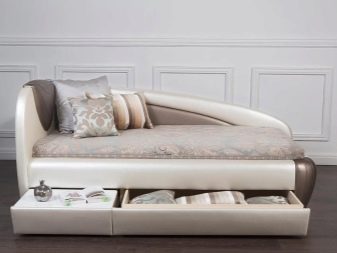
Modern products are divided into 3 main types, they are classified according to the form and design of production.
- Corner models. In such an ottoman, a low and thin side wall is located on one longitudinal and end side. In many variations, the backrest height is gradually reduced from the corner to the side edges of the structure. They are made with an orthopedic mattress, designed for both two and one person.
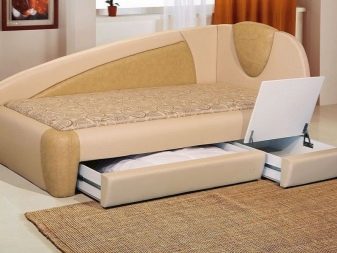

- Direct products... They have low armrests and a slightly raised back wall. Oversized double designs take up a relatively large amount of space and are mainly used only in bedrooms as a bed for a night's sleep - they can be made without armrests. Single ottomans are usually produced with small armrests and outwardly, laid with pillows, resemble an ordinary sofa.
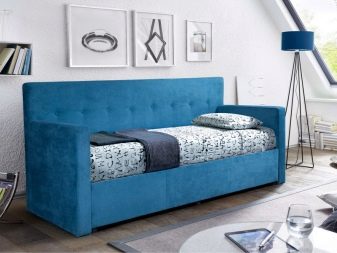
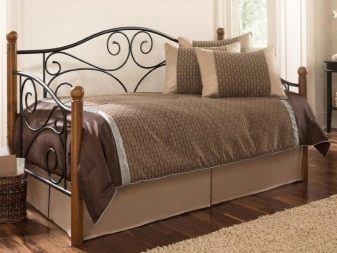
- Modular Ottomans... Furniture is a prefabricated structure of several elements, which, if necessary, can be used separately from each other. Among the finished products on the market, there are more corner options, where two parts are connected by removable fasteners. Models in the shape of the letter "P" are in less demand due to their bulkiness.
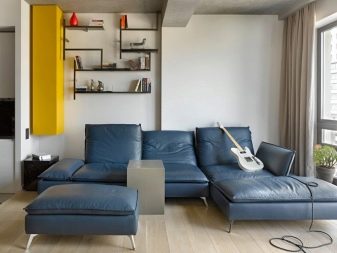
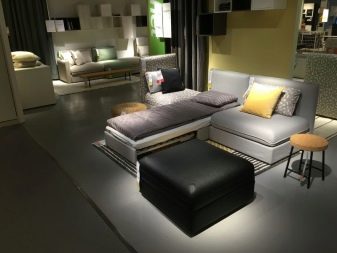
The ottoman is multifunctional furniture, so there are also many unique designer items. They differ:
- the size of removable parts and the number of modules;
- the height and location of the back and armrests;
- arrangement of a place for placing linen.
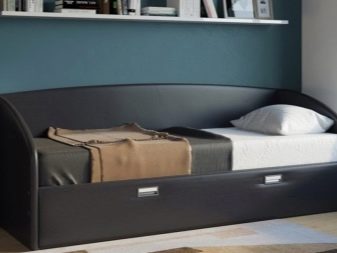
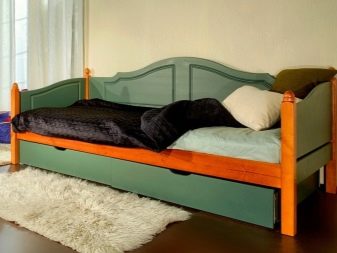
Depending on the model, the built-in drawers may be retractable or lifting - the upper part of the ottoman rises to reveal the linen drawers. The configuration and designs of boxes also differ - manufacturers divide the niche into compartments, use different shapes and sizes. In retractable models, a roller mechanism is installed, in lifting ones - struts with springs or gas shock absorbers.
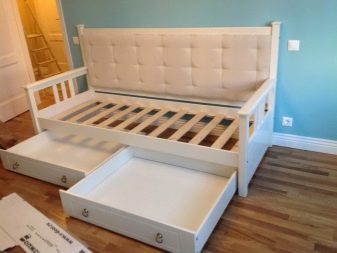
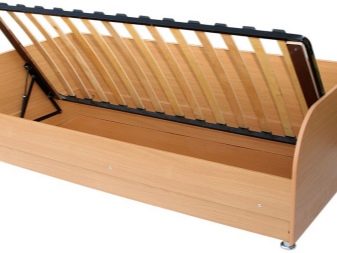
Dimensions (edit)
When choosing furniture it is important to remember that the main purpose of the ottoman with an orthopedic base is to provide healthy rest, especially when it is planned to use it for sleeping every night... Unlike a typical sofa, which is only needed for a short rest in the daytime, the size of the ottoman for sleeping must meet certain standards. It is recommended that, with a standard length of 2 meters, the width of a single model should be at least 80 cm, and a double model should be at least 180 cm. One-and-a-half ottomans with an orthopedic mattress are made with a width of 1-1.5 m.
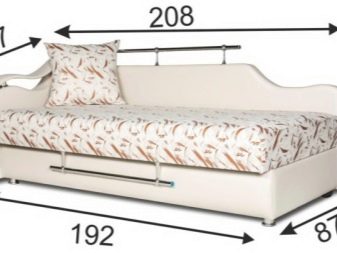
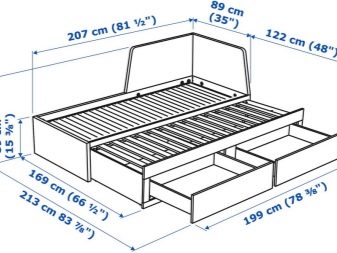
Despite standardization, The most comfortable for sleeping and everyday rest is an ottoman measuring 1.2 by 2 meters. This configuration allows two adults to be comfortably accommodated for a night's sleep. The same amount of space is required for one child - children sleep more restlessly and they need more space. When choosing a single model, especially when custom-made, you can deviate from the standard sizes in the direction of decreasing the length - much depends on who will sleep on the bed, how tall the person will be.
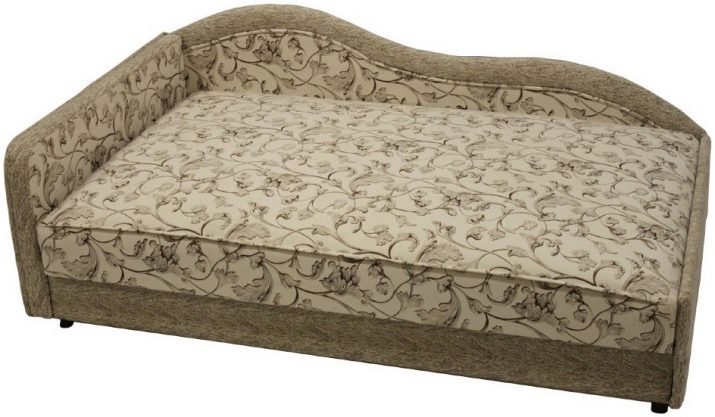
Often the dimensions of the ottoman are selected for the already finished interior, adjusting to the possibilities of the room, however, it is highly discouraged by medical standards to reduce the length of the double ottoman.
Materials and design
In addition to the orthopedic base, the design of the ottoman consists of a number of different elements - frame, upholstery, drawers, lifting or sliding mechanisms. Secret drawers for real estate in almost all models are made of wood, less often of chipboard or plywood. The mechanisms differ mainly in the quality of the metal and fasteners.
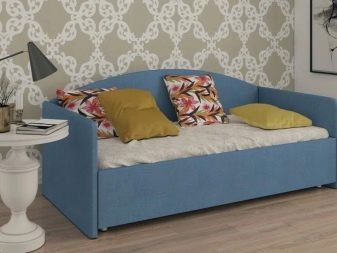
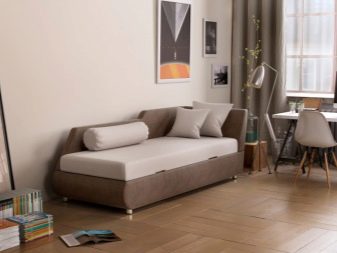
The main indicators when choosing an ottoman are the materials for the manufacture of the frame and upholstery.
When assembling frames for modern furniture, manufacturers use:
- wood;
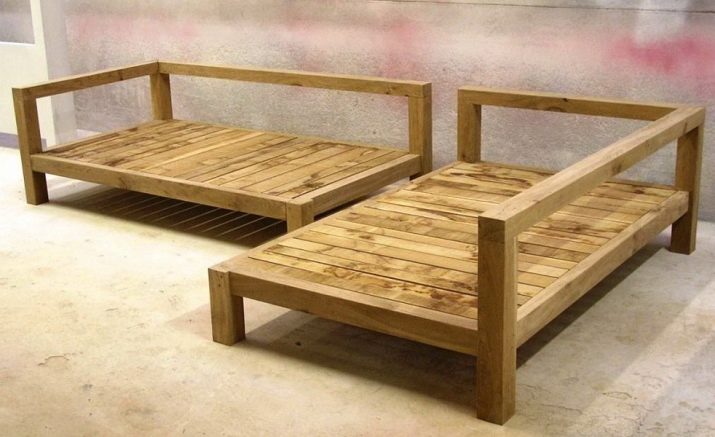
- metal;
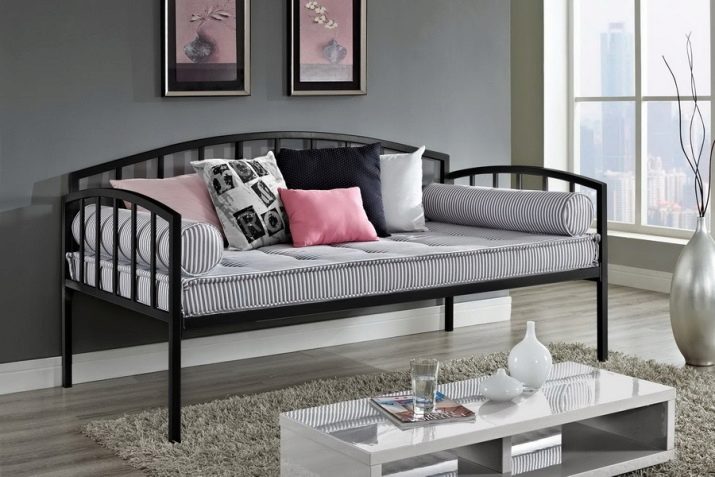
- plastic;
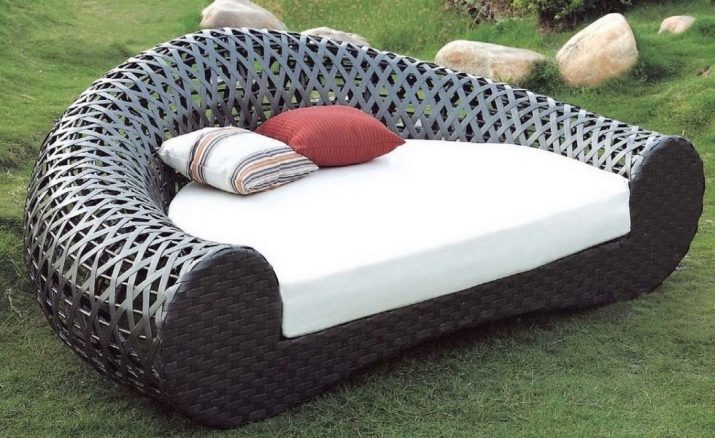
- Chipboard;
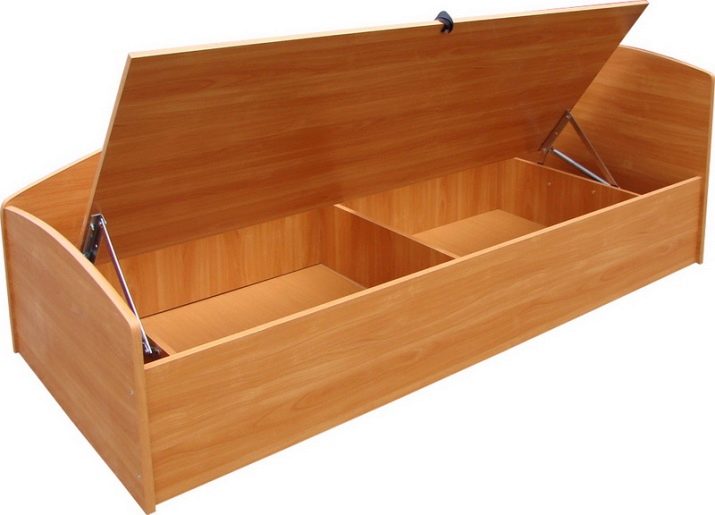
- plywood.

Expensive products are assembled from wood and metal, budget options are often made from chipboard. But it must be remembered that the composition of the chipboard includes various synthetic resins and compounds that can be hazardous to human health.
The most popular types of upholstery material:
- flock - durable, pleasant to the touch fabric made from natural ingredients;
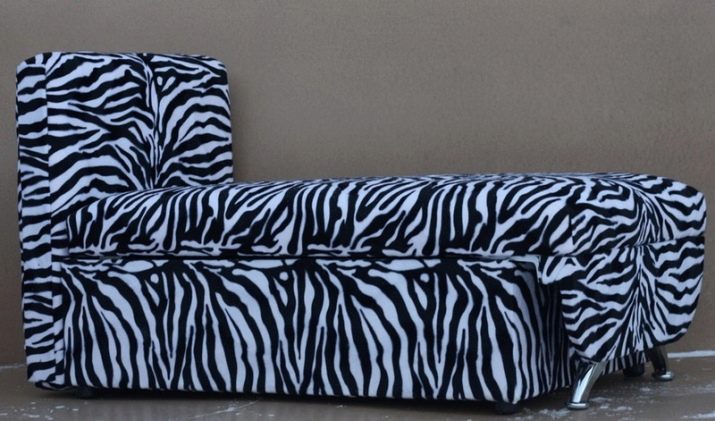
- chenille - wear-resistant strong material, easy to clean and clean;
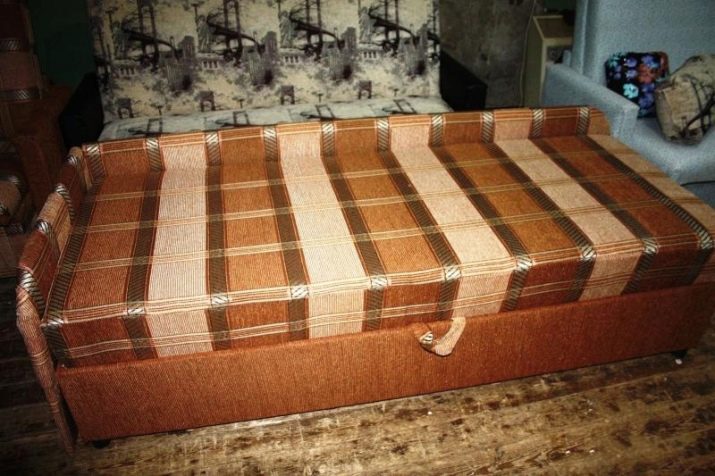
- jacquard - beautiful velvety fabric, however, with frequent use of furniture, it begins to "roll";
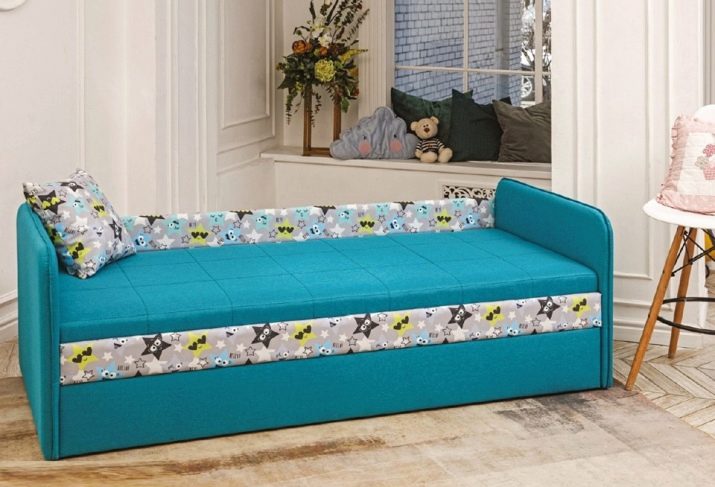
- faux suede - inexpensive, but presentable-looking material, has high strength and a long service life, of the minuses - it is afraid of moisture.
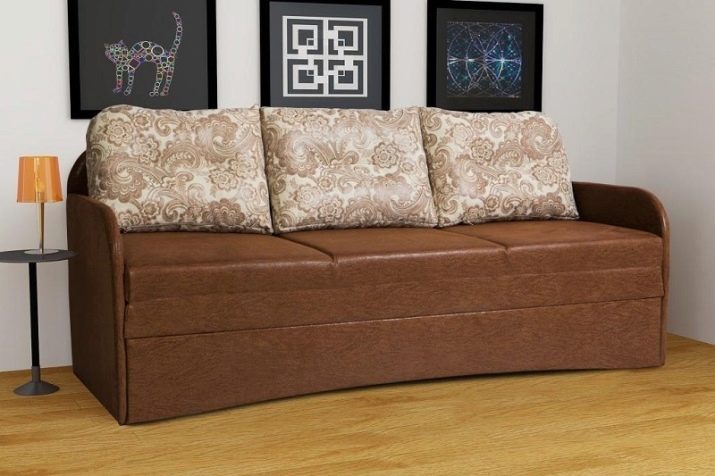
Standardization of design concerns only the size and part of the shape of the furniture, while materials of manufacture are combined in various versions. And not only in extraordinary, custom-made designs, but also in ready-made factory beds. For example, the frame can be metal, and the side armrests and backrest are made of plywood, or the noble velvet retro upholstery can hide a modern structure made of plywood, chipboard and plastic with sophisticated sliding mechanisms.
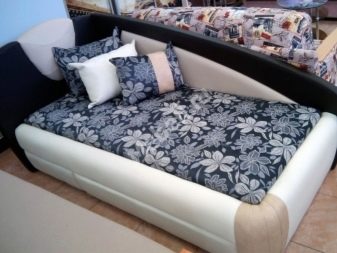
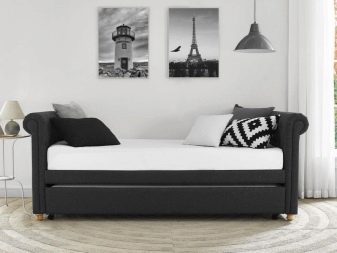
How to choose?
When choosing an ottoman you need to take into account the weight, height and age of the person who will sleep on it. For people under 25 years old, it is recommended to purchase semi-rigid and rigid orthopedic bases, people over 50 are more suitable for soft types - this will help to avoid problems with intervertebral discs. Most types of ottomans are designed for weight from 60 to 90 kg, for overweight people there are special models with reinforced spring blocks and filler based on coconut fiber.

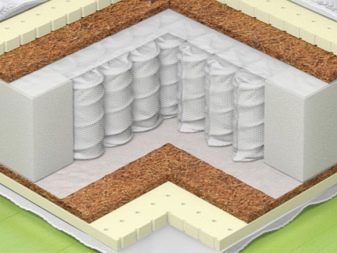
Beautiful examples
An ottoman with an orthopedic mattress fits well into the style of almost any interior; it is often used by designers when arranging small rooms, small apartments. In houses where a separate room for the bedroom is provided, as a rule, single or corner products are installed, for example, in the hall, office or in the kitchen.
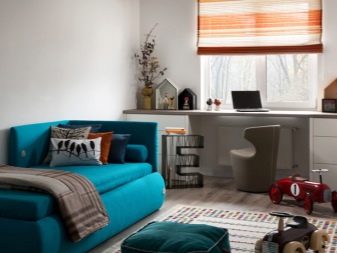
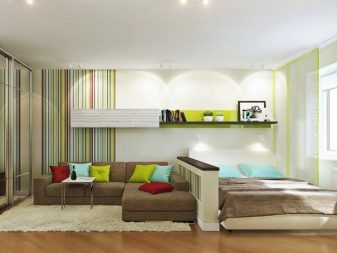
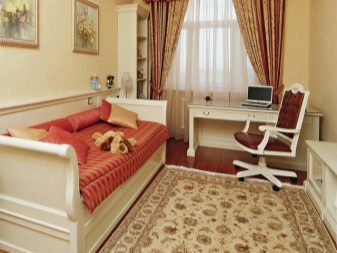
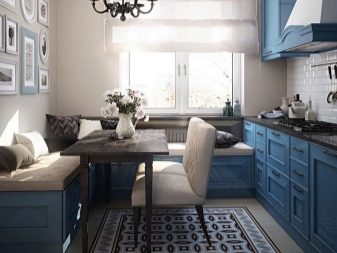
Since such furniture saves money and space in the room, it is very popular among summer residents, owners of country houses, where daily rest is expected, but only for a certain period.
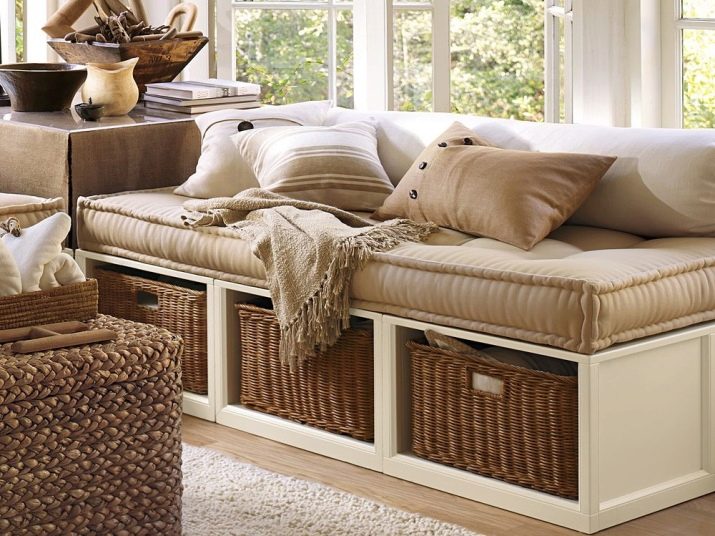
Designs with an orthopedic mattress are made using different upholstery materials, therefore they are combined with many interior styles. Due to the low seating position and the absence of massive armrests and backrests, the product looks advantageous in an oriental-style setting.
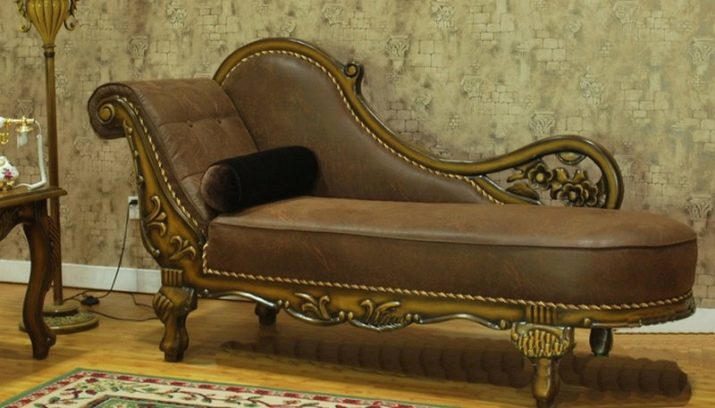
Decorated in colorful original colors, the ottoman will successfully complement the decor of the children's room - it will free up space for movement and create a bright, cheerful atmosphere.
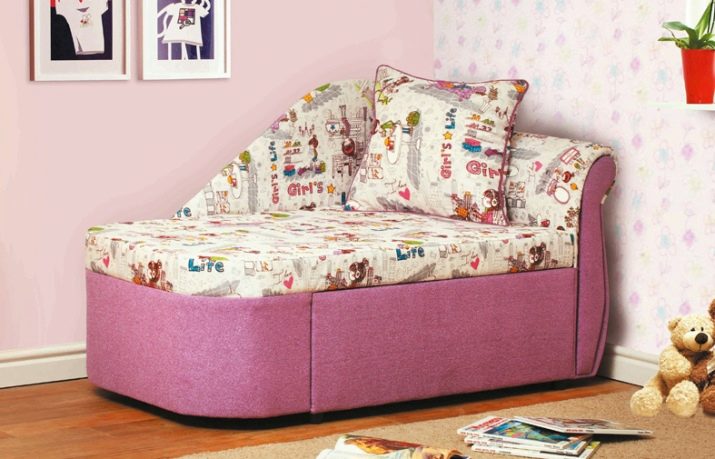
Ideal for the implementation of design solutions in the areas of loft, pin-up, art deco and art nouveau.
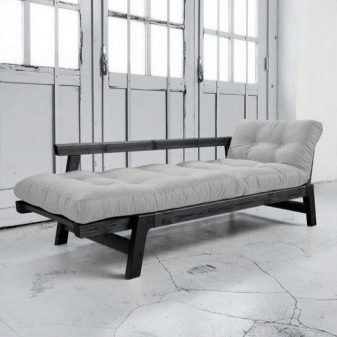
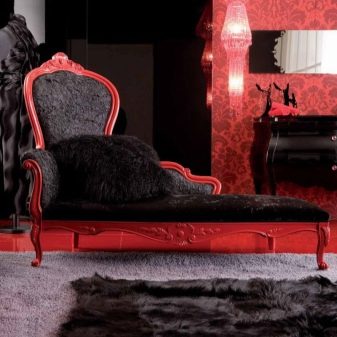
For an overview of the folding ottoman, see the next video.








